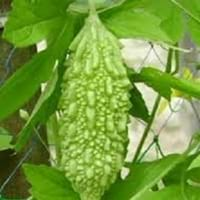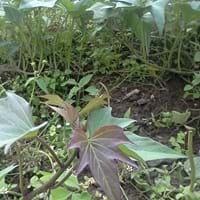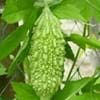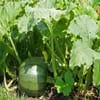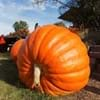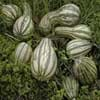Life Span
Annual
Annual and Perennial
Type
Vegetable
Bulb or Corm or Tuber
Origin
North America, Mexico, Central America
Latin America and the Caribbean, Central America, Micronesia
Types
Not Available
Hannah Yams, Japanese Sweet Potatoes
Habitat
Loamy soils, Moist Soils, Subtropical climates
Cold Regions, Tropical regions
USDA Hardiness Zone
5-7
11-12
Sunset Zone
A1, A2, A3, H1, H2, 1a, 1b, 2a, 2b, 3a, 3b, 4, 5, 6, 7, 8, 9, 10, 11, 12, 13, 14, 15, 16, 17, 18, 19, 20, 21, 22, 23, 24
21,22
Habit
Vining/Climbing
Vining/Climbing
Minimum Width
Not Available
Flower Color
Yellow, Orange, Dark Green
Not Available
Flower Color Modifier
Bicolor
Bicolor
Fruit Color
Yellow, Dark Green
Not Available
Leaf Color in Spring
Green, Dark Green
Green, Purple, Light Green, Chartreuse, Bronze
Leaf Color in Summer
Green, Dark Green
Light Green
Leaf Color in Fall
Green, Dark Green
Several shades of Green
Leaf Color in Winter
Not Available
Light Green
Leaf Shape
Palmate
Heart-shaped
Plant Season
Summer, Fall
Spring, Summer, Fall, Winter
Sunlight
Full Sun
Full Sun, Partial Sun
Growth Rate
Very Fast
Very Fast
Type of Soil
Loam, Sand
Clay, Loam, Sand
The pH of Soil
Neutral
Acidic, Neutral, Alkaline
Soil Drainage
Well drained
Well drained
Bloom Time
Indeterminate
Late Fall, Early Winter, Winter
Tolerances
Drought
Drought
Where to Plant?
Ground
Ground, Pot
How to Plant?
Seedlings
Stem Cutting, Tuber propagation
Plant Maintenance
Medium
Medium
Watering Requirements
Keep ground moist, Requires regular watering
Average Water Needs, Needs a lot of water initially
In Summer
Lots of watering
Lots of watering
In Spring
Moderate
Moderate
In Winter
Average Water
Average Water
Soil pH
Neutral
Acidic, Neutral, Alkaline
Soil Type
Loam, Sand
Clay, Loam, Sand
Soil Drainage Capacity
Well drained
Well drained
Sun Exposure
Full Sun
Full Sun, Partial Sun
Pruning
Cut out old flower stalks, Prune after flowering, Remove dead or diseased plant parts
Remove damaged leaves, Remove dead branches, Remove dead leaves
Fertilizers
Apply 10-10-10 amount, Apply 12-12-12 amounts, Nitrogen, Phosphate, Potassium
All-Purpose Liquid Fertilizer
Pests and Diseases
Aphids, Army-worms, Bacteria wilt, Bacterial leaf spot, Blight, Cucumber beetles, Cutworms, Fusarium leaf spot, Red spider mite
Aphids, Beetles, Leafminers, Red blotch
Plant Tolerance
Drought, Full Sun, Salt and Soil Compaction
Drought
Flower Petal Number
Single
Single
Foliage Texture
Coarse
Coarse
Foliage Sheen
Matte
Matte
Attracts
Bees, Flies, Flying insects
Aphids, Beetles, Mites, white worms
Allergy
Hypoglycaemic Coma, Irregular Heart Rhythm, Miscarriage
Abdominal pain, Skin rash, Swelling, Vomiting
Aesthetic Uses
Not Used For Aesthetic Purpose
Not Used For Aesthetic Purpose
Beauty Benefits
Acne, For treating wrinkles, Improve hair condition, Nourishes scalp, Removes dandruff
Not Available
Environmental Uses
Food for animals, Insect Repellent
Air purification
Medicinal Uses
Anti-fungal, Detoxification, Diabetes, Gastrointestinal disorders, Weight loss
Potassium, ß-carotene, Vitamin C
Part of Plant Used
Fruits
Leaves, Root, Shoots
Other Uses
Cosmetics, Repellent, Use in Chinese herbology
Used As Food, Used for its medicinal properties
Used As Indoor Plant
No
Yes
Used As Outdoor Plant
Yes
Yes
Garden Design
Dried Flower/Everlasting, Vine
Container, Edible, Groundcover, Hanging Basket, Herb / Vegetable, Mixed Border, Vine
Botanical Name
CUCURBITA pepo 'Bicolor Pear'
IPOMOEA batatas
Common Name
Bicolor Pear Gourd, Ornamental Gourd
Sweet Potato, Sweet Potato Vine
In German
Bittermelone
Süßkartoffel
In French
Momordica charantia
Patate douce
In Spanish
Momordica charantia
Batata
In Greek
Not Available
Γλυκοπατάτα
In Portuguese
Momordica
Batata doce
In Polish
Przepękla ogórkowata
Słodki ziemniak
In Latin
Not Available
Dulcis SOLANUM TUBEROSUM
Phylum
Spermatophyta
Magnoliophyta
Class
Magnoliopsida
Magnoliopsida
Family
Cucurbitaceae
Convolvulaceae
Clade
Not Available
Angiosperms, Asterids, Eudicots
Tribe
Not Available
Not Available
Subfamily
Cucurbitoideae
Not Available
Season and Care of Bitter Gourd and Sweet Potato
Season and care of Bitter Gourd and Sweet Potato is important to know. While considering everything about Bitter Gourd and Sweet Potato Care, growing season is an essential factor. Bitter Gourd season is Summer and Fall and Sweet Potato season is Summer and Fall. The type of soil for Bitter Gourd is Loam, Sand and for Sweet Potato is Clay, Loam, Sand while the PH of soil for Bitter Gourd is Neutral and for Sweet Potato is Acidic, Neutral, Alkaline.
Bitter Gourd and Sweet Potato Physical Information
Bitter Gourd and Sweet Potato physical information is very important for comparison. Bitter Gourd height is 60.00 cm and width 90.00 cm whereas Sweet Potato height is 60.00 cm and width Not Available. The color specification of Bitter Gourd and Sweet Potato are as follows:
Bitter Gourd flower color: Yellow, Orange and Dark Green
Bitter Gourd leaf color: Green, Dark Green
Sweet Potato flower color: Not Available
- Sweet Potato leaf color: Green, Purple, Light Green, Chartreuse and Bronze
Care of Bitter Gourd and Sweet Potato
Care of Bitter Gourd and Sweet Potato include pruning, fertilizers, watering etc. Bitter Gourd pruning is done Cut out old flower stalks, Prune after flowering and Remove dead or diseased plant parts and Sweet Potato pruning is done Remove damaged leaves, Remove dead branches and Remove dead leaves. In summer Bitter Gourd needs Lots of watering and in winter, it needs Average Water. Whereas, in summer Sweet Potato needs Lots of watering and in winter, it needs Average Water.
